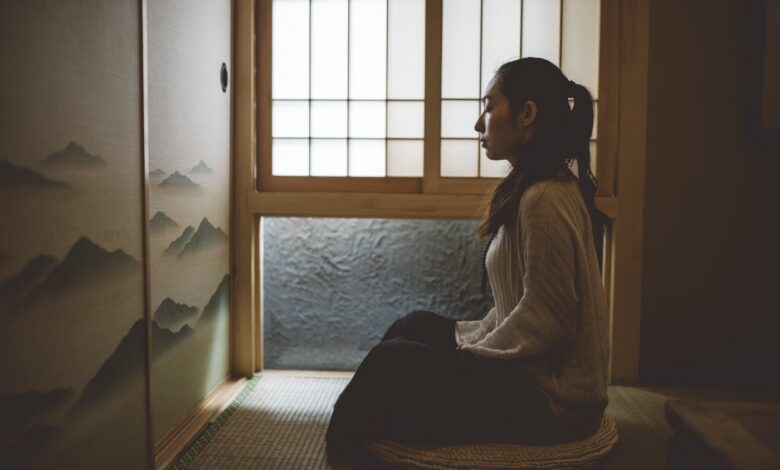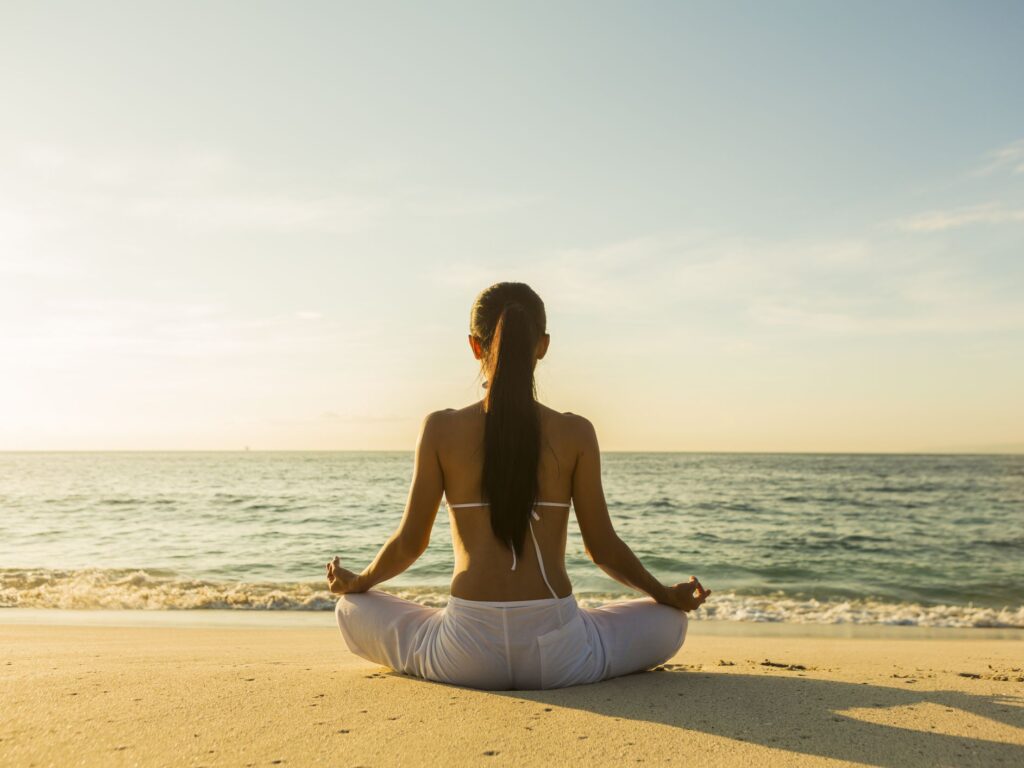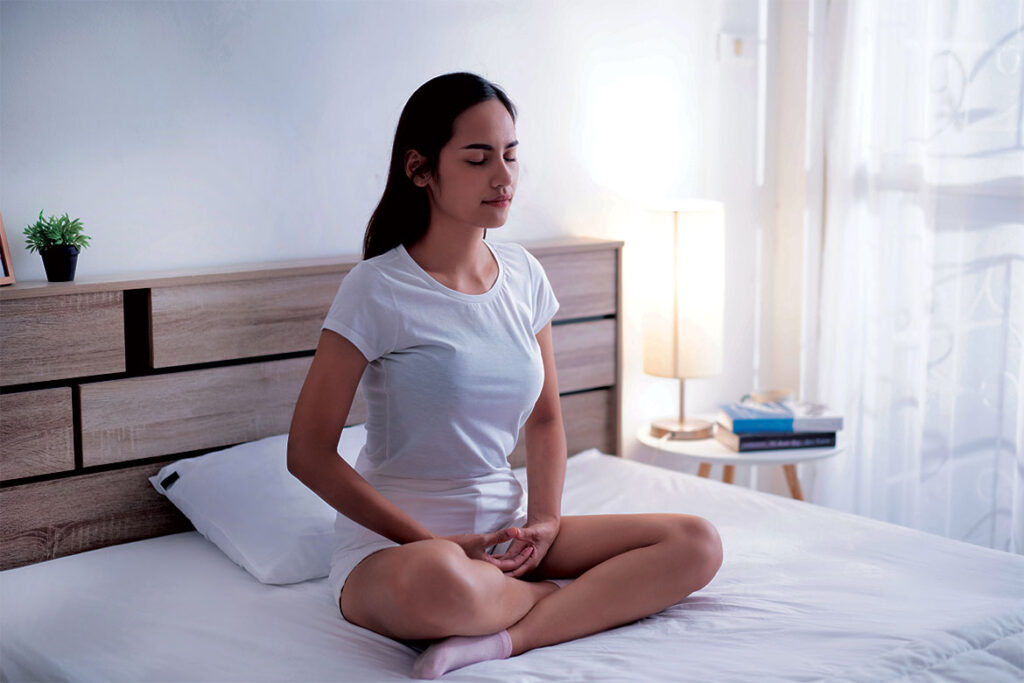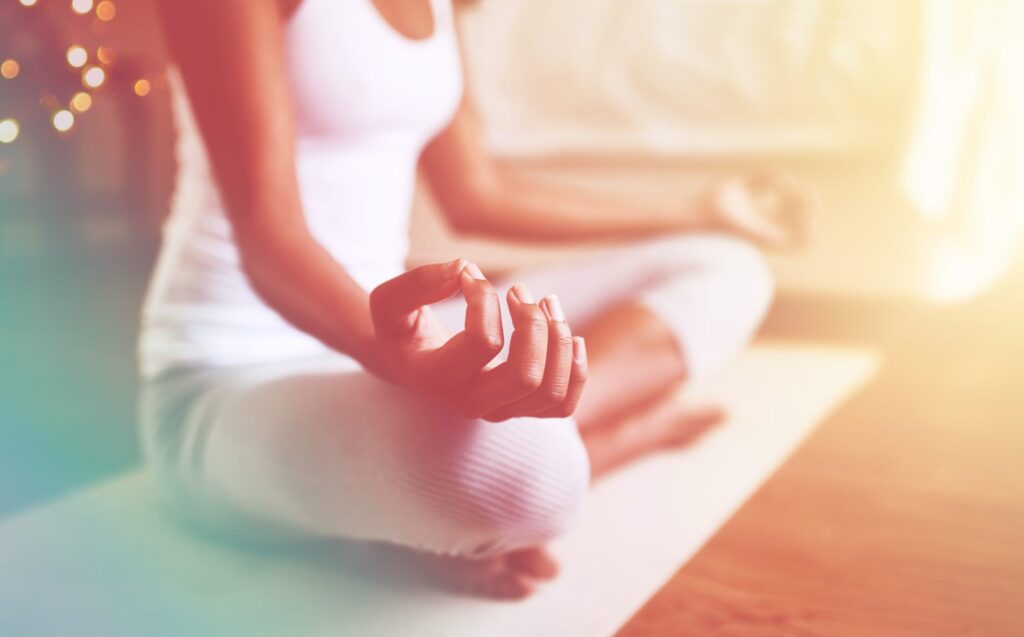
Meditate Properly: What Beginners Need to Know
Meditations help you find emotional health and improve sleep quality.
What is meditation? Many people think you should sit with your eyes closed, imagine you’re by the sea, and have fun. Is that what it is?
Meditation is something that happens by itself when you perceive everything and do not interfere with it in any way. In fantasy, you only see the movie in your head, but you don’t feel your body or the world around you, or the subtle reality beyond words. And yet you interfere: the sea didn’t appear in your head by itself, you deliberately imagined it.
In meditation, you are in clear consciousness and do nothing. Usually, at other times, “doing nothing” means sleeping or disconnecting from reality. There are many ways: fantasies, movies, books, betting at a top bookmaker for sports betting, working without rest, etc.
It seems to many that it’s impossible to bear reality without processing, without interference, that meditation is one means of escaping from the rough world. In fact, the opposite is true: meditation immerses you in reality, and you see that you can be in it, exist in it, and do nothing. In a way, it’s even pleasant.
Why a Person Needs to Meditate
People meditate to become calmer, to learn to cope with stress, to stop suffering. Those who constantly meditate are more difficult to lose their temper.
Meditation helps with insomnia and depression. It gives freedom, inner peace and a connection to something larger than the individual.
Meditation not only affects the mind but also the body. When you relax the mind, the body also relaxes, the blood pressure normalizes, the pulse becomes less frequent. And that activates the parasympathetic system which is responsible for rest, recovery, digestion.
But if you think: “I need to calm down. I’m going to sit and meditate,” you’re actively interfering with your state. You don’t get to be and not do. Nor is there freedom-you depend on anxiety and want to chase it away.
A meditation would be, “Anxiety? Interesting. I’ll observe it.” Perceive it and don’t interfere. You’ll probably calm down at the same time. So you can think of the results of meditation as its side effects. When you sit down to meditate, forget why you’re doing it.
With practice, you may find that meditation is valuable in and of itself, that you’re happy to return each time to a space of silence where you don’t have to fix anything. Then you’ll really forget about the results, and meditation becomes as natural as breathing or walking.
Where to Start if You Want to Meditate

The easiest thing is to start with the breath. Sit down and watch your breathing. Don’t interfere. Notice the body breathing. You don’t do anything for it, it breathes on its own.
Simultaneously with your breathing, you may notice tension, other sensations in your body, feelings, emotions, and thoughts. You may feel the urge to scratch, drink, or check to see if the stove is off. All of these are not obstacles, but the background of your meditation. Perceive them without looking closely: there is – and that’s okay. there is a lot going on in the mind, and you go back to your breathing.
Of course, you’ll find it easier with an instructor. But a good instructor will definitely offer to practice on your own, too. Can freedom depend on someone else? It’s in you.
How to Choose a Place
You can meditate anywhere, even at the soccer stadium or in the subway – it’s very useful there. But it is better to choose a place where you are not distracted, where you can relax and not control anything.
It’s easier for a modern person to meditate indoors. But try it outdoors, too: maybe that’s where it would be easier for you to breathe and not interfere.
It’s better to meditate at home in a ventilated room where you can sit comfortably and you won’t be distracted. It’s better not in the bedroom or kitchen (so you don’t feel like sleeping or eating while meditating). If you can arrange a separate place just for meditation, great! But if that’s impossible, meditate wherever you can. And if the only quiet place in the house is the kitchen, meditate there!
What Poses to Use
In the pictures it’s always lotus pose because meditation was brought from the East, and it’s a common practice there to sit on the floor. In fact, there is nothing “spiritual” about the lotus pose. The discomfort hardens the spirit, and you can meditate without it.
It’s perfect to sit with a straight back. On the floor on a cushion, cross-legged if you like. Or in a chair, without leaning on the backrest, and with your feet resting on the floor, not dangling in the air. It’s easier to maintain clarity with a straight spine.
If you can’t sit up straight, you can lean or meditate standing or lying down. When you have enough practice, you can do it on the go.
What to Focus on During Meditation
Concentration is the opposite of meditation. You concentrate when you’re thinking about something, aiming a gun, correcting a text. To concentrate means to tense, to narrow your attention.
In meditation, you are attentive and relaxed at the same time. It’s unusual, but you can learn.
If you’re just starting out, it’s convenient to direct your attention to your breathing, but don’t hold it there. Let it notice everything else that’s present now, too. You relax, and your attention expands. The body breathes, and anything else can happen at the same time.
Other “objects” you can direct your attention to are silence, the white wall in front of you, the sky, the emptiness inside your body. When you’re confident about spending half an hour with the breath, try silence or emptiness. But start each meditation with a few minutes in the breath-this is the most reliable entrance. The enlightened begin with the breath, too.
Do You Have to Close Eyes

With your eyes open, it’s easy to forget that your body is now breathing and start thinking about everything you see. That’s why it’s best to close your eyes.
But if you constantly fall asleep during meditation, open your eyes. Look at one point on the floor in front of you, without focusing your gaze on it. Eyes don’t move, focus on how the body is breathing.
There are deep meditations where you look at a white wall, or water, or fire. You look with an unfocused gaze, not trying to grasp the details, but as if you are immersed in the image. In front of the white wall, you can notice how many extraneous thoughts are in your head – there’s nothing to think about here and now, and an unconscious flow brings to the surface.
How to Breathe Correctly
The right thing to do is not to interfere with your breathing. How the body breathes naturally now is the right thing to do.
There are many breathing techniques to help you fall asleep, wake up, clear, calm down. But meditation is about freedom. It doesn’t specifically do anything in the body or depend on it. You can meditate with any breath, even a stuffy nose.
In meditation, the breath itself becomes deeper, freer, calmer. But you don’t. Sometimes you may notice how in deep meditation the breath becomes subtle, barely noticeable. But that’s not the goal, that’s just another side effect.
Are There Techniques Specifically for Beginners
The best technique for beginners is to observe the breath. There are a few things that can help not only in the beginning but also through years of practice.
Return Calmly
During meditation, you will notice that you “lose” your breath. It happens to everyone. Don’t get upset. Don’t berate yourself. Without wasting time, go back. If you get back in your breath every minute, great! You have learned to notice that you are “lost.”
The less you think about why and why you got distracted, the faster you get back.
Don’t Try

Tension is the opposite of meditation. Be as attentive as you can. Notice your breathing as much as you can. Sit as long as you can.
The “labor and result” approach doesn’t apply to meditation. There’s no need to strive for the best. Take it in without getting involved. You only need a minimum of will not to fall asleep. With practice, it will work itself out.
Don’t Evaluate
No matter how the meditation went, say to yourself, “Another facet of the inner world has opened up. For example, you’ve learned that you can’t stay with your breath for five minutes. Great, now you know that the mind is restless and bouncing around all the time. Or you’ve seen emotions, anxiety, fantasies. They’re just there, you can perceive them and not interfere.
Find a Teacher or Fellow Meditation Practitioner
Yes, this is an inner practice. Yes, you meditate with yourself, within yourself. But with support, it’s a little easier. It’s that “little bit” that many people lack, to see themselves and the world through different eyes. To find that space inside, where it is easy to be and not interfere – and to rejoice, like a long-forgotten happiness.




